Today Current Affairs:21st June 2022 for UPSC IAS exams, State PSC exams, SSC CGL, State SSC, RRB, Railways, Banking Exam & IBPS, etc
Table of Contents
First National Conference Of Chief Secretaries:
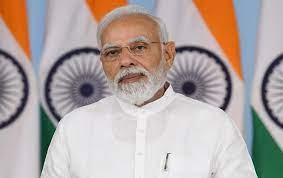
Prime Minister Narendra Modi chaired the First National Conference of Chief Secretaries at HPCA Stadium in Dharamshala, Himachal Pradesh.
- The National Conference of Chief Secretaries was held from 15th to 17th June 2022.
- More than 200 people participated in the conference, representing the Central Government, all States/ UTs and domain experts.
- It was a significant step towards further strengthening the partnership between the Centre and the State Governments.
Spread over three days, Three themes were discussed in the Conference:- Implementation of the National Education Policy;
- Urban governance; and
- Crop diversification and achieving self-sufficiency in oilseeds, pulses and other agri-commodities.
Skalzang Rigzin : The first Indian Mountaineer To Climb Mount Annapurna Peak
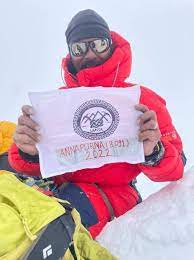
Skalzang Rigzin, the first Indian Mountaineer to climb Mount Annapurna peak without supplemental Oxygen, received a warm welcome in Leh.
- With 16 days of gap between climb of Mt Annapurna on April 28 and Mt Lhotse on May 14, Skalzang Rigzin has set a record to summit two peaks without oxygen supplements.
- Annapurna is a mountain situated in the Annapurna mountain range of Gandaki Province, north-central Nepal.
- It is the tenth highest mountain in the world at 8,091 metres above sea level.
- Mt Annapurna is one of the most difficult among the 8000 meters height peaks in the world and is also known as the Killer Mountain due to its fatality to summit rate.
Sequoia Capital:

Sequoia Capital has raised $2.85 billion to invest in startups in India and Southeast Asia.
- Of this, the venture capital firm will deploy about $2 billion in Indian startups while the remaining $850 million will be used to fund startups in the Southeast Asia region.
- This is the biggest dedicated India fund raised by an investor at a time when startup funding has slowed down on global cues.
- Sequoia Capital is an American venture capital firm. The firm is headquartered in Menlo Park, California and mainly focuses on the technology industry.
- The venture capital fund has been an early backer of some of the biggest tech companies in the world including Apple, Google and WhatsApp.
- It is one the most active VC fund company in India. In India it is an investor in Byju’s, Unacademy and Zomato.
National e-Governance Service Delivery Assessment 2021 (NeSDA 2021):

The Union Ministry of Personnel, Public Grievances and Pensions released the second edition of the National e-Governance Service Delivery Assessment 2021 (NeSDA 2021).
- The NeSDA 2021 report has been prepared covering the assessment of States, Union Territories with a focus on Central Ministries on their effectiveness in delivering online services to citizens.
- NeSDA 2021 covers services across seven sectors: Finance, Labour and Employment, Education, Local Governance and Utility Services, Social Welfare, Environment and Tourism sectors.
- The Department of Administrative Reforms and Public Grievances (DARPG) had constituted the NeSDA in 2019 as part of its mandate to boost the e-government endeavours and drive digital government excellence.
Findings:
- Jammu and Kashmir, assessed for the first time, ranked the highest among Union Territories with an overall compliance of nearly 90 percent for NeSDA.
- Meghalaya and Nagaland are the leading state portals with an overall compliance of more than 90 percent across all assessment parameters among the northeast and hill states.
- Kerala, Odisha, Tamil Nadu, Punjab, Karnataka and Uttar Pradesh had a compliance of more than 85 percent among the Remaining States category.
- Kerala had the highest overall compliance score amongst all the States and UTs.
Chess Olympiad Games:

For the first time, this year, India is also going to host the Chess Olympiad games.
- The event was originally scheduled in Russia
- India is considered the birthplace of chess.
- Its origin can be traced back nearly 1500 years to its earliest known predecessor, called chaturanga, in India.
- From India, it spread to Persia.
- The game evolved roughly into its current form by about 1500 CE.
Bamboo-Dwelling Bat:

Scientists have discovered a new species of bamboo-dwelling bat near the Nongkhyllem Wildlife Sanctuary.
- The new species of bamboo-dwelling bat has been named Glischropus meghalayanus.
- Bamboo-dwelling bats are a particular kind of bat living in the internodes of bamboo with specialised morphological characters that help them to adapt to the life inside a bamboo plant.
- It is small in size and has a dark brown colour with sulphur yellow belly.
- The present discovery is the first report of a thick-thumbed bat not only from India but also from South Asia.
- This bat has typical fleshy pads on the thumb and soles of feet which aid them to crawl over smooth surfaces of bamboo internodes
- Thick-thumbed bats of the genus Glischropus are currently composed of four recognized species from Southeast Asia.
- G. aquilus is endemic to Sumatra, G. javanus is restricted to western Java, whereas G. bucephalus is widely distributed north to the Isthmus of Kra and G. tylopus is widespread south to this zoogeographic boundary.
- Earlier, a new species of thick-thumbed bat (Chiroptera: Vespertilionidae: Glischropus) from Meghalaya, north-eastern India was discovered.
Renewables 2022 Global Status Report (GSR 2022):
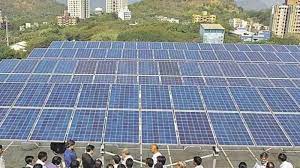
Recently the Renewables 2022 Global Status Report (GSR 2022) was released by REN21 (Renewable Energy Policy Network for the 21st Century).
- REN21 is a global collective of renewable energy actors.
- It includes scientists, governments such as India’s, non-governmental organisations and members of the industry who collated data on renewable energy installations, markets, investments and policies in countries across the world.
- The Renewables 2022 Global Status Report documents the progress made in the renewable energy sector.
- It highlights the opportunities afforded by a renewable-based economy and society, including the ability to achieve more diversified and inclusive energy governance through localised energy generation and value chains.
- Countries with higher shares of renewables in their total energy consumption enjoy a greater level of energy independence and security.
Highlights of the Report:
- This Report sends a clear warning that the global clean energy transition is not happening, making it unlikely that the world will be able to meet critical climate goals this decade.
- Although many more governments committed to net zero greenhouse gas emissions in 2021, the reality is that, in response to the energy crisis, most countries have gone back to seeking out new sources of fossil fuels and to burning even more coal, oil and natural gas.
- For the first time, GSR 2022 provides a world map of renewable energy shares by country and highlights progress in some of the leading countries.
- In the lead-up to the United Nations Climate Change Conference (COP26) in November 2021, a record 135 countries pledged to achieve net zero greenhouse gas emissions by 2050.
- However, only 84 of these countries had economy-wide targets for renewable energy, and only 36 had targets for 100 % renewables.
India’s Performance:
- Renewable Energy: India ranked third in renewable energy installations in 2021, after China and Russia.
- Hydropower Capacity: India added 843 MW of hydropower capacity in 2021, raising the total capacity to 45.3 GW.
- New Solar PV Capacity: India was the second largest market in Asia for new solar PV capacity and third globally (13 GW of additions in 2021).
- Total Installations: It ranked fourth for total installations (60.4 GW), overtaking Germany (59.2 GW) for the first time.
- Wind Power: India ranked third globally for the total installed capacity of wind power (40.1 GW), behind China, the US and Germany.
World Mental Health Report: WHO

The World Health Organization (WHO) released the World Mental Health Report.
Highlights of the report:
- WHO has called for more action on addressing mental health issues worldwide, especially now that the ‘Covid-19’ pandemic has been cited as contributing to worsening mental health.
- Almost a billion people, 14% of whom were adolescents, were living with some form of mental health issues in 2019.
- For some, this resulted in dying by suicide which accounted for one in 100 deaths, with more than half of them happening before the age of 50.
- Depression and anxiety spiked 25 % in the first year of the pandemic (2020).
- All 194 WHO member states have adopted the Comprehensive Mental Health Action Plan 2013–2030 but progress has been slow.
- Other structural threats to mental well-being besides the pandemic include social and economic inequalities, public health emergencies, war and the climate crisis.
- Those living with mental health issues live some two decades less than the general population.
- Access to mental health services remains poor. Globally, 71% of psychosis patients don’t receive treatment.
- High-income countries provide treatment to 70% psychosis patients and low-income countries manage the same for just 12%.
- The WHO’s report lists three key ‘paths to transformation’ to quicken progress on the Comprehensive Mental Health Action Plan 2013–2030.
- These include more focussed investment in mental health, reshaping environments such as homes, communities, schools, workplaces and health care services that influence mental health and strengthening the quality of mental health care by diversifying it.
Aspirational District Programme:
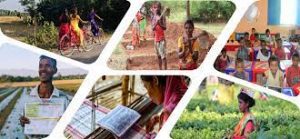
The Prime Minister has expressed his desire to extend the Aspirational District Programme to block and city levels.
- Aspirational Districts Programme was launched in 2018 which aims to transform districts that have shown relatively lesser progress in key social areas.
- Aspirational Districts are those districts in India, that are affected by poor socio-economic indicators.
- Broad Contours of the Programme:
- Convergence (of Central & State Schemes)
- Collaboration (of Central, State level ‘Prabhari’ Officers & District Collectors),
- Competition among districts through monthly delta ranking.
- The delta ranking of the Aspirational Districts combines the innovative use of data with pragmatic administration, keeping the district at the locus of inclusive development.’
- Objectives:
- It focuses on the strength of each district, identifying low-hanging fruits for immediate improvement and measuring progress by ranking districts on a monthly basis.
- Districts are prodded and encouraged to first catch up with the best district within their state, and subsequently aspire to become one of the best in the country, by competing with, and learning from others in the spirit of competitive & cooperative federalism.
- The Government is committed to raising the living standards of its citizens and ensuring inclusive growth for all – “Sabka Saath Sabka Vikas aur Sabka Vishwas”.
- The ADP is essentially aimed at localizing Sustainable Development Goals, leading to the progress of the nation.
- Parameters for Ranking:
- The ranking is based on the incremental progress made across 49 Key Performance Indicators (KPIs) under 5 broad socio-economic themes –
- Health & Nutrition (30%)
- Education (30%)
- Agriculture & Water Resources (20%)
- Financial Inclusion & Skill Development (10%)
- Infrastructure (10%)
- The ranking is based on the incremental progress made across 49 Key Performance Indicators (KPIs) under 5 broad socio-economic themes –
Amrit Sarovar Mission:

The Union government has asked the Ministry of Railways and the National Highways Authority of India (NHAI) to use the soil/silt excavated from ponds/tanks in all districts across the country under the Amrit Sarovar Mission for their infrastructure projects.
- Amrit Sarovar Mission was launched on 24th April 2022 with a view to conserve water for the future.
- Aim: The Mission is aimed at developing and rejuvenating 75 water bodies in each district of the country as a part of celebration of Azadi ka Amrit Mahotsav.
- In total, it would lead to the creation of 50,000 water bodies of a size of about an Acre or more.
- The Mission encourages mobilisation of citizen and non-govt resources for supplementing these efforts.
- Bhaskaracharya National Institute for Space Application and Geo-informatics (BISAG-N) has been engaged as technical partner for the Mission.
- The Mission works through the States and Districts, through refocusing of various schemes such as Mahatma Gandhi NREGS, XV Finance Commission Grants, PMKSY sub schemes such as Watershed Development Component, Har Khet Ko Pani besides States’ own schemes.
- Mission Amrit Sarovar is to be completed by 15th August 2023.
- Around 50,000 Amrit Sarovar may be constructed in the country.
- Each of these Amrit Sarovar will have approx. area of 1 acre with a water holding capacity of 10,000 cubic meters.
- People’s participation in the Mission is the focal point.
- Local freedom fighter, their family members, Martyr’s family members, Padma Awardee and citizens of the local area wherein an Amrit Sarovar is to be constructed, will be engaged at all stages.
- On every 15th August, National Flag hoisting will be organized on every Amrit Sarovar site.
- So far, 12,241 sites have been finalized for construction of Amrit Sarovars by States/Districts, out of which works has started on 4,856 Amrit Sarovars.
What Is Surety Bond?

The Ministry for Road Transport & Highways (MORTH) has asked insurance regulator Insurance Regulatory and Development authority (IRDAI) to develop a model product on Surety Bonds in consultation with general insurers.
- Several challenging issues which made Surety Bond a complete non-starter with the insurers have also been discussed and it was proposed to IRDAI that it should design a model product.
- The issue of Changes to the Indian Contract Act as well as the Insolvency and Bankruptcy Code (IBC) was also highlighted so that Surety Bonds are on the same footing as bank guarantees when it comes to recourse available to them in the case of default – are also being considered.
- A surety bond can be defined in its simplest form as a written agreement to guarantee compliance, payment, or performance of an act.
- Surety is a unique type of insurance because it involves a three-party agreement. The three parties in a surety agreement are:
- Principal – the party that purchases the bond and undertakes an obligation to perform an act as promised.
Surety – the insurance company or surety company that guarantees the obligation will be performed. - If the principal fails to perform the act as promised, the surety is contractually liable for losses sustained.
- Obligee – the party who requires, and often receives the benefit of— the surety bond. For most surety bonds, the obligee is a local, state or federal government organization.
- Surety bond is provided by the insurance company on behalf of the contractor to the entity which is awarding the project.
- Principal – the party that purchases the bond and undertakes an obligation to perform an act as promised.
- Aim:
- Surety bonds are mainly aimed at infrastructure development, mainly to reduce indirect cost for suppliers and work-contractors thereby diversifying their options and acting as a substitute for bank guarantee.
- Benefits:
- Surety bonds protect the beneficiary against acts or events that impair the underlying obligations of the principal.
- They guarantee the performance of a variety of obligations, from construction or service contracts to licensing and commercial undertakings.
West Seti Power Project: Nepal
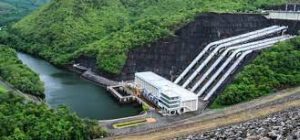
India will be taking over West Seti Hydropower Project nearly four years after China withdrew from it, ending a six-year engagement between 2012 and 2018.
- Earlier, the Indian Prime Minister visited Lumbini, where he celebrated 2566th Buddha Jayanti celebrations, also Nepal invited India to invest in West Seti Hydropower Project.
- West Seti Power Project is a proposed 750-megawatt Hydropower Project, which is to be built on the Seti river in far-western Nepal, which has remained on the drawing board for the last six decades.
- Lately, the government has remodeled the project as West Seti and Seti River (SR-6), a joint storage project, with the capacity to generate 1,200 megawatts of electricity.
- This storage or reservoir will fill up during the monsoon season and the water will be drawn to generate power during peak hours each day in the dry season.
- Its success is expected to restore India’s image in Nepal and give it weightage in future considerations for hydropower projects, when competition is bound to be tough.
- West Seti, therefore, has the potential to be a defining model for Nepal India’s power relations in future.




